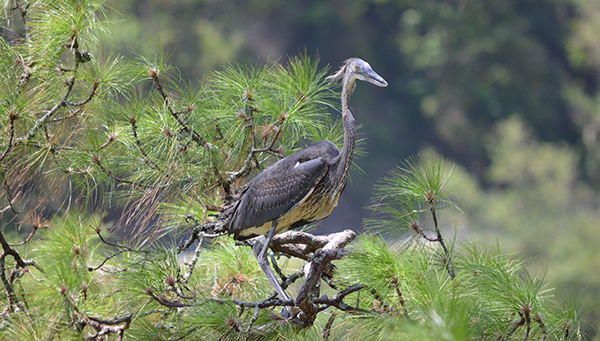 The population of the white-bellied heron in the country is decreasing by the year. The annual population survey 2021 for the endangered bird species recorded 22 herons which is a decrease from 27 in 2020. The decrease in the population was mainly because of increasing disturbance along the upper Punatsangchhu basin along Phochhu, Mochhu, Adha and Harachhu which are the oldest habitats.
The population of the white-bellied heron in the country is decreasing by the year. The annual population survey 2021 for the endangered bird species recorded 22 herons which is a decrease from 27 in 2020. The decrease in the population was mainly because of increasing disturbance along the upper Punatsangchhu basin along Phochhu, Mochhu, Adha and Harachhu which are the oldest habitats.
The annual White-bellied heron population survey recorded 19 adults and three sub-adult herons. But the survey found no birds along Phochhu, Mochhu, Adha and Harachhu. According to the Royal Society for Protection of Nature (RSPN), it is worrying as the bird species is disappearing from the habitats which were once used abundantly.
“I think the decrease in population is mainly due to increasing disturbance because we all see the developmental activities going on along Punatsangchhu and also the disturbances on flight routes. Although the habitats in Harachhu and Adha are not disturbed, the flight routes the herons are using to fly to from those areas are disturbed. So because of that, the endangered birds are increasingly avoiding those areas especially the upper Punatsangchhu basin and also Adha and Nangzhina areas which were once mostly used and we used to have up to five nests on those areas. Currently, there are no nests in the upper Punatsanhchhu basin, we only have nests in the lower Punatsangchhu basin which is Tsirang, Dagana and lower Mangdechhu,” said Indra Acharja, the Chief of Species Conservation Division under the RSPN.
The RSPN also started tagging the bird species with GPS since 2016 to understand its movement patterns, lifestyle and distribution. However, it was not successful.
“Of the two herons we tagged in 2016, one died, we found the tag but we did not receive any data on the other heron. We had a technical issue with the tag, we didn’t receive any data and we still don’t know the whereabouts of the heron. Of the three herons we tagged in 2019, one died which I think is mostly because of injury. And of the remaining two, we found one last year, still with the tag but we couldn’t receive any data. Since satellite tagging the herons is a new activity that we are carrying out and because of the bird species’ morphology, the tags cannot be mounted like other birds. So we are still modifying the tags. The two herons we didn’t sight during the population survey this time, we are hopeful that they are still alive,” he said.
To conserve the endangered bird species, the RSPN is also establishing a captive breeding centre at Changchey in Tsirang.
“The conservation breeding centre coming up at Changchey is almost complete and we are hoping to start the founder population from this breeding season. So hopefully by the end of 2021, we will have at least one or two herons in the centre. We will also continue in-situ conservation by monitoring threats. But unfortunately, there is nothing we can do physically to protect the herons as they live in habitats that are inaccessible to us. But we will continue with conservation efforts,” he added.
The white-bellied heron is among the 50 rarest birds in the world and is listed as critically endangered in International Union for Conservation of Nature species red list. And Bhutan is among the only three countries in the world that hosts endangered bird species.
Phub Gyem












